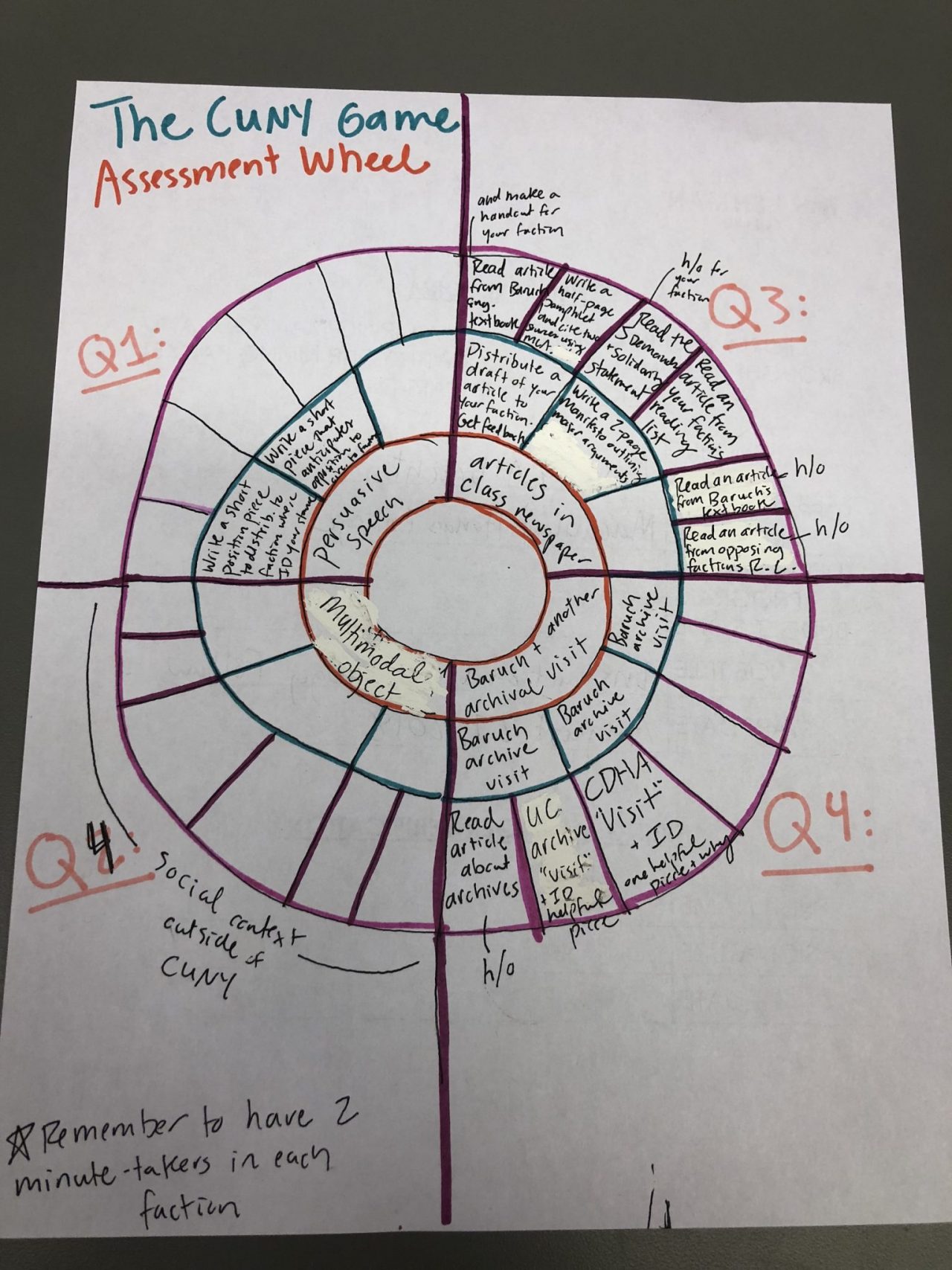For the past couple of weeks Lindsey and I (Hamad) have been focusing on the scenario game (the RPG) since we already know how to structure it. We’ve come up with an outline which we’re fleshing out day by day. In doing so, we’ve thought about and tried to solve many issues like:
- Should we base characters more closely on real people or create factionalized amalgams?
- What should the setting look like? A town hall or a committee? Should every character vote? Should there be other characters in other (non-voting) roles?
- What should assignments look like? Relatedly not every class using this game will have the same learning goals, so how do we generate a list of assignments that most classes would find useful?
- How would we get instructors who are not familiar and comfortable with the game’s content but into the game itself?
Some of the above questions were easier to deal with than others, and in general we found that they were all connected in some way. For example, the question of what kinds of characters to include was related to what types of assignments the students filling those roles would end up doing, and how that would satisfy the learning goals of the class. Specifically, if we correlated voting character roles with learning goals on research, then how could we incentivize non voting characters to also achieve similar learning goals?
Thinking through these issues led us to create a complex structure for the game where we tried to work toward:
- balancing ‘what really happened’ with incentives for the players to also create their own story
- how each player would be motivated to achieve most of the learning goals in order to fulfill their character’s own goals
- creating suggested class sessions and assignments for instructors use so that they can focus on the learning goals rather than learning or trying to become an expert about the game’s content
- acknowledging that this game will not be a good fit for many classes, and, while keeping the learning goals broad enough, still tailoring them (and the game) to research and communication-oriented courses
Oh, and we also created a mock-up of the game’s website. Designing the site came with a whole set of its own questions and decisions, but more on that in the next post. 🙂
